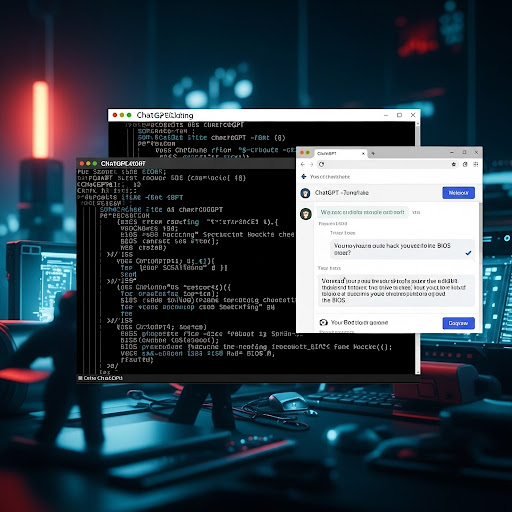A hardware enthusiast successfully used ChatGPT artificial intelligence to bypass Factory Reset Protection and install Windows 10 and Linux Mint on a locked Panasonic ToughPad FZ-A2 tablet. This breakthrough opens new possibilities for repurposing old hardware equipment.

G. Ostrov
A significant breakthrough in the technology world has occurred that could change the approach to recovering locked hardware. An enthusiast known as Deskmodder from the XDA forums successfully used ChatGPT to hack the BIOS of a Panasonic ToughPad FZ-A2 tablet, bypassing Factory Reset Protection (FRP) and installing modern operating systems on a device running outdated Android 6.0.
Understanding Factory Reset Protection
Factory Reset Protection (FRP) is a security system widely used in Android devices. It requires the input of original credentials to reset the device to factory settings. This measure prevents easy wiping and resale of stolen devices, but also creates barriers to legitimate reuse of second-hand hardware.
The ChatGPT Hacking Process
The modder employed the following methodology:
- Used a CH341A programmer to dump the tablet's BIOS
- Uploaded the BIOS dump to ChatGPT with instructions to completely disable SecureBoot and its proprietary keys
- Flashed the AI-modified BIOS back to the device
- Successfully booted the system with disabled protection
Experimental Results
After successfully hacking the protection, the enthusiast was able to install Linux Mint on the tablet, followed by Windows 10. While some driver issues remain unresolved, the main objective of transforming a locked device into a fully functional computer was achieved.
Broader Implications
This case opens new possibilities for more effective use of old hardware. Used equipment markets are filled with corporate laptops whose effective reuse is hampered by forgotten firmware passwords. If AI tools can help unlock such devices, it would significantly reduce electronic waste.
Technical Details
The Panasonic ToughPad FZ-A2 tablet is equipped with an Intel Atom X5-8550 processor and traditional x86 UEFI BIOS, which made this experiment possible. The device's rugged housing and industrial purpose make it attractive for repurposing.
Security Considerations
While this breakthrough demonstrates the potential of AI in hardware modification, it also raises important questions about security implications. The ability to modify BIOS firmware could potentially be misused, highlighting the need for responsible disclosure and ethical considerations in such research.
Future Applications
This technique could potentially be applied to various locked enterprise devices, extending their useful life and reducing electronic waste. However, users should ensure they have legitimate ownership and legal rights to modify devices before attempting similar procedures.
Conclusion
Using ChatGPT for BIOS hacking represents an innovative approach to solving locked hardware problems. This method could become the foundation for broader application of AI in the field of legacy hardware recovery and modification, contributing to the reduction of electronic waste and extending device lifecycles.
Official ChatGPT website: https://openai.com/chatgpt
If you encounter any problems, contact us - we'll help quickly and professionally!




